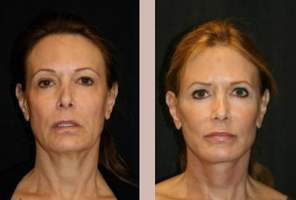Excessive sweating can be both a physically agonizing and emotionally stressful condition. Some patients may become so embarrassed by their excessive sweating that they avoid all social interaction while unaware that there are treatment options to help them.
Botox Injections: This is a non-surgical procedure that utilizes Botox injections to temporarily stop the sweat glands from releasing perspiration in the affected area. Your treatment provider will first use a topical anesthetic to numb the area being treated, followed by the injections that are placed directly into the sweat glands. The amount of injections required depends on the area being treated. Most patients require 15-20 injections on average. Botox can be used on virtually any area of the body that is affected by excessive sweating, but is commonly used for the underarms. This is not a permanent solution for hyperhidrosis and will have to be repeated at least every 6-8 months.
Prescription Deodorants: Aluminum chloride is a common ingredient found in many antiperspirants because it helps to temporarily plug the sweat glands, preventing perspiration. Drysol is a commonly used deodorant for excessive sweating that contains higher amounts of aluminum chloride than regular antiperspirants. Drysol needs to be applied on a regular basis and can only be purchased through a prescription from a skin care specialist.
Oral medication: There are a variety of prescription oral medications that can help improve symptoms of excessive sweating by reducing or blocking nerve impulses to the sweat glands. These medications include: Anticholinergics, such as glycopyrrolate, Carbonic anhydrase inhibitors such as topiramate, and Clonidine.
Iontophoresis: This is an older treatment that utilizes electrical stimulation to treat excessive sweating of the palms of the hands and soles of the feet. The treatment is performed by the patient in their home and involves submerging the affected areas into a small container filled with water, then activating a machine to emit a mild electrical current that is passed through the water. The treatment is completely safe and painless and patients normally feel just a slight prickling sensation in the area. The device used for this treatment is purchased through a prescription from your skin care specialist.
Surgery: Surgical treatment is commonly used as a last resort when other excessive sweating procedures have failed. There are always risks and side effects associated with surgical procedures and you and your skin care specialist should be assured that all other treatment options have been exhausted.
• Endoscopic Thoracic Sympathectomy (ETS): Patients are put under general anesthesia for this procedure which lasts approximately an hour. The surgeon will then divide the sympathetic nerves and begin cutting or clamping the ones that control the sweat glands. This helps reduce the glands from producing sweat in the problem areas.
• Retrodermal Curettage: This is a newer procedure that is used exclusively for excessive sweating of the arm pits. The procedure is similar to liposuction and patients are put under general anesthesia.
The first part of the procedure involves the surgeon making tiny incisions around the armpit. The surgeon then uses a special tool to scrape away the sweat glands that produce perspiration in the affected area. Finally a liposuction tube is used to suck out the discarded tissue. This procedure takes about an hour to complete and has a 90% success rate.



